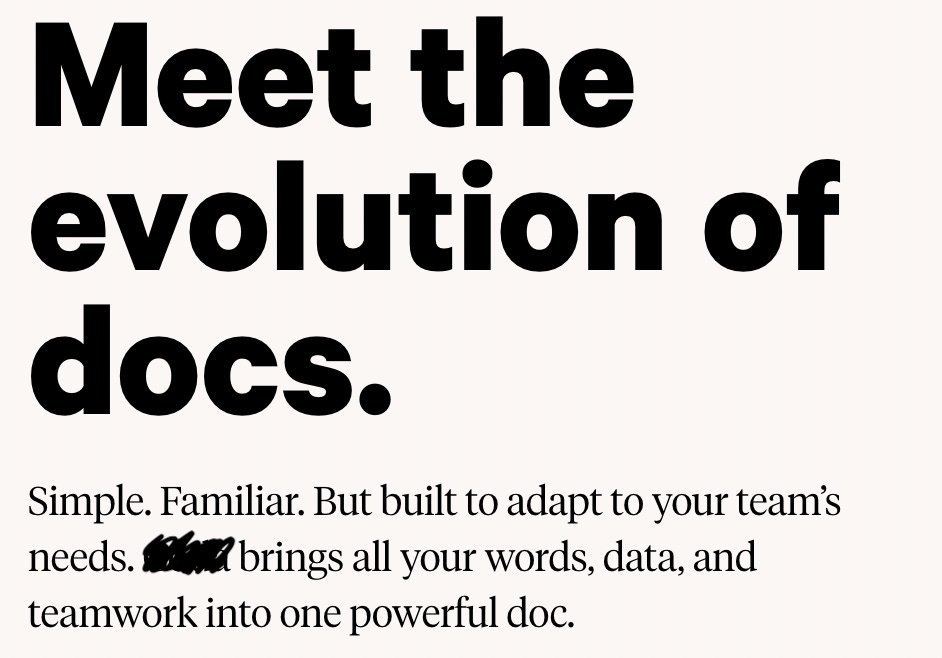Why messaging is just as important as positioning, with real-life examples
This was originally published in our monthly newsletter. Subscribe here.
Why you need to nail your messaging and give it the time it requires
Positioning is very difficult to do well and the same can be said for messaging. But oftentimes organizations rally around positioning, then pass off messaging (or what they might just see as ‘copywriting’) to whichever marketer is in the closest vicinity.
There are plenty of positioning docs, decks, and statements floating around in an organization. Whether they are actually getting used is a convo for another day. I think on average, there isn’t enough emphasis on how you actually act on positioning, with messaging being an essential lever. There, I said it. Maybe because doing the actual work to be clear and internally aligned on what you say about your product is also really difficult.
A quick note on what messaging is
Messaging is the clarity of what you say about your product.
Six key elements of product messaging:
Product description: what your product is in 5 words or less.
Headline: a compelling headline and image that resonates with the buyer and makes them want to learn more about your product. Generally a combination of why you exist and what you do.
Subhead: Hint at the problem and how your product solves it.
Benefit/Outcome: What your target buyer will achieve by using a combination of features. Use the description to explain how that happens.
Customer testimonial: In a perfect world, what would your ideal customer say about your product?
Features: This is where you check off their shopping list with feature names and descriptions.
(Taken from this blog by Arielle Schnaidman, Director of Product Marketing at Olivine)
Grading a few real-life examples of messaging
We’re going to play a game to reinforce why messaging is so important to your product’s success. I’ll show three homepage headlines and subheads without any further context. Pause at every screenshot and guess what the company does.
While we’re technically looking at copywriting here, try to infer the messaging behind each example based on what the product promises, and who it might be addressing.
Example #1
Example #2
Example #3
My takes
1: This has something to do with e-commerce, but I couldn’t figure anything else out. Maybe they’re selling to small or medium-sized business owners. Who knows?
2: This is clearer and more compelling than the first. The subhead tells me it’s a type of all-in-one workspace and for people who manage teams. There’s familiarity with the nod to Google Docs. But what is “the evolution of docs”? Maybe they are paving the way in a new market category or have a lot of brand awareness. I see missed potential to address their core persona.
3: I can instantly understand this is a hiring marketplace that connects tech startup founders with top notch developers. There’s so much shared language here between the brand and their customers—“Behold! The almighty devs,” and using the double slash, “//.” This is amazing messaging (and copywriting) that speaks to one persona and one persona only.
All this is to say, of course there are some caveats here. One, I’m not an April Dunford (yet). Two, a lot of other factors go into positioning and messaging, including how far along you are as a brand. Disney can say lofty shit like “where dreams come true” because everyone knows Disney.
Let’s keep challenging products to simply say what they do and do what they say—not claim to create super powers.
Common pitfalls with messaging projects
I think starting and tinkering with messaging can be simple. After you’ve put a stake in the ground with your positioning and know your core persona deeply, then write as if you’re speaking to them in a 1:1 conversation. These days we can test how effective messaging is with a tool like Wynter.
Depending on the product and company, messaging projects can also get messy, fast. These are some common pitfalls I’ve seen from a consultant and in-house perspective.
#1 Treating messaging like copywriting
Rae, Co-founder of Olivine, says in her blog about great messaging that one of the main goals of a messaging project is to “get alignment and consensus on key messaging themes, before you ever write website copy.” Focus on being clear and concise when it comes to messaging—you can get snazzy later when it comes to what your target audience actually ends up seeing. Messaging docs are internal-facing.
#2 Getting too many people involved
If you loop in people outside of leadership or the immediate project team, their feedback may just cause noise or confusion about the project entirely.
#3 Not getting the right people involved
When a messaging project stays inside marketing, it dies there, too. Getting alignment from leadership is essential, or all your hard work may not see the light of day and actually impact your product’s growth.
CALL OUT:
Check out what ‘before’ and ‘after’ messaging looks like from some of our client projects, including ServiceNow, Stellar, and ConductorOne.





